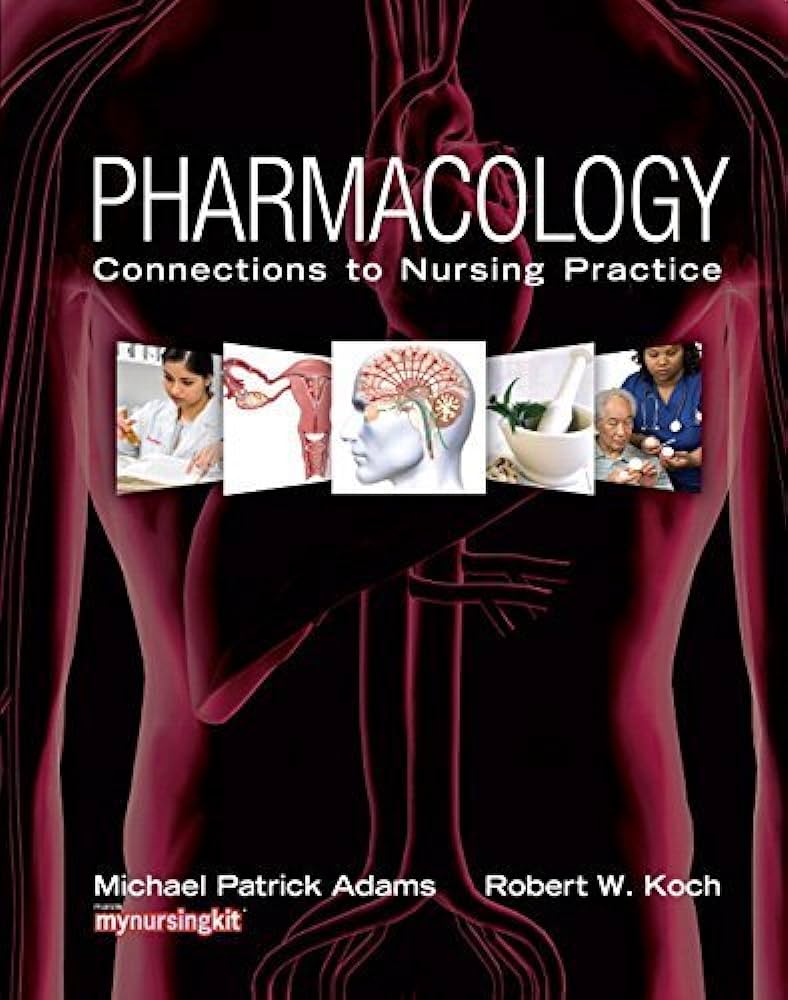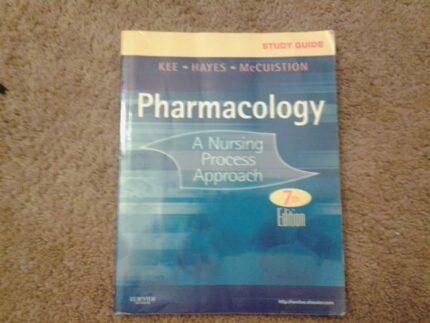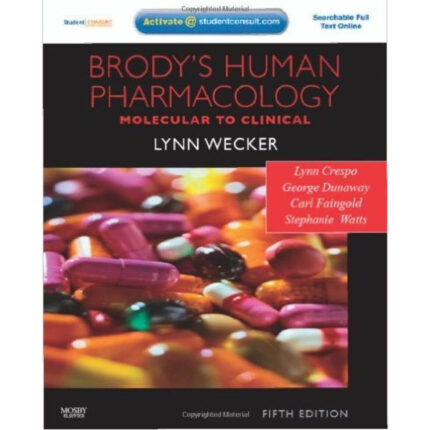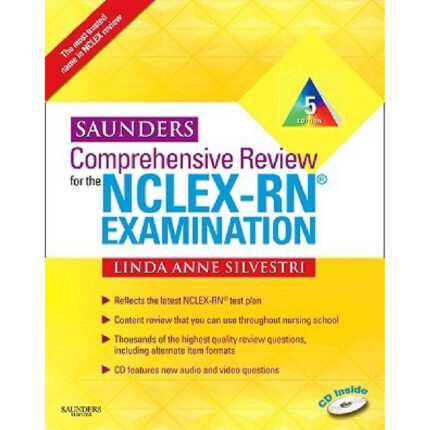Pharmacology Connections To Nursing Practice 1st Edition By Michael Patrick Adams – Test Bank
Adams: Pharmacology: Connections to Nursing Practice, 1e
Chapter 11
Pharmacology of the Pediatric Patient
- Which classification of drugs is more commonly prescribed for children due to their high incidence of infectious diseases?
- Cardiovascular drugs
- Respiratory drugs
- NSAIDs
- Attention-deficit drugs
Answers: 2
Rationale:
- Cardiovascular drugs are more commonly prescribed for adults.
- Respiratory drugs are most likely to be prescribed to children, due to high incidence of infectious diseases.
- Although NSAIDs are prescribed for children, they are not the class most commonly prescribed for treating pain or inflammation.
- Attention-deficit drugs are prescribed only to a certain population of children with attention-deficit problems.
Cognitive Level: Analysis
Client Need: Physiologic Integrity
Nursing Process: Implementation
Learning Outcome: 11-1
- In 1997, the Food and Drug Administration Modernization Act was passed. What was the legislature’s rationale for this action?
- So that pharmaceutical companies would have higher profits for pediatric drugs
- So that there would be more pediatric drugs on the market
- To improve testing and labeling of pediatric drugs
- To prove that all adult medications were safe for children
Answer: 3
Rationale:
- There was a financial incentive for the research, but that was not the purpose of the act.
- Pediatric drug research would only be done on drugs already on the market.
- The Food and Drug Administration Modernization Act was passed to improve testing and labeling of pediatric drugs.
- Not all adult medications are safe for children.
Cognitive Level: Analysis
Client Need: Physiologic Integrity
Nursing Process: Implementation
Learning Outcome: 11-1
- The Modernization Act contained several flaws, and resulted in Congress’s passing the Best
Pharmaceuticals for Children Act in 2002. What was the major flaw in the Modernization Act?
- Higher profits for studying off-patent drugs
- Drugs were chosen to be studied for their potential value for children.
- Drugs were chosen to be studied for their financial benefits to the pharmaceutical
companies.
- Congress controlled the choice of drugs that the pharmaceutical companies
were allowed to study.
Answer: 3
Rationale:
- There were higher profits for studying on-patent drugs, not off-patent drugs.
- Most of the drugs that were studied were chosen for their financial incentive, not for their potential value to pediatric drug research.
- Drugs were chosen to be studied for their financial benefits to the pharmaceutical companies. Most of the drugs studied were in adult drug classes. The main rationale for the pharmaceutical companies’ choice of drugs for the studies was financial.
- Congress did not choose the drugs to be researched. The decision of which drug to study was left to the pharmaceutical companies.
Cognitive Level: Analysis
Client Need: Health Promotion and Maintenance
Nursing Process: Evaluation
Learning Outcome: 11-1
.
| Learning Outcome 2 | Explain how differences in pharmacokinetic variables can impact drug response in pediatric patients.
|
- The nurse must understand the unique actions of drugs in pediatric patients in order to deliver safe and effective pharmacologic therapy. What factor must the nurse understand in relationship to the absorption of weak acids?
- High gastric acid production can enhance the absorption.
- High gastric motility can reduce the rate of absorption of drugs across the stomach lining.
- Slow gastric motility can reduce the rate of absorption of drugs across the stomach lining.
- Low gastric acid production can enhance the absorption.
Answer: 4
Rationale:
- Low gastric acid production, not high gastric acid production, enhances absorption.
- Slow gastric motility increases the absorption of drugs across the stomach lining.
- Slow gastric motility increases the absorption of drugs across the stomach lining.
- Low gastric acid production can slow the absorption. Low gastric acid slows the absorption of weak acids like phenobarbital.
Cognitive Level: Analysis
Client Need: Health Promotion and Maintenance
Nursing Process: Evaluation
Learning Outcome: 11-2
- The nurse must understand the unique actions of drugs in pediatric patients to deliver safe and effective pharmacologic therapy. What factor would lead to the dilution of the drug furosemide (Lasix) in the newborn?
- Higher proportion of water to fat dilutes water-soluble drugs.
- Higher proportion of fat to water dilutes water-soluble drugs.
- There is no dilution of the drug in pediatric patients.
- Lower proportion of fat to water dilutes water-soluble drugs.
Answer: 1
Rationale:
- The newborn’s weight is 80% water.
- The proportion of water to fat is higher.
- The high water-to-fat ratio dilutes furosemide.
- Higher proportion of water to fat causes dilution of some drugs.
Cognitive Level: Analysis
Client Need: Physiologic Integrity
Nursing Process: Implementation
Learning Outcome: 11-2
- An infant is brought to the ED presenting with the following symptoms: oliguria, hematuria,
cloudy urine, and fever. What would the nurse anticipate the physician’s diagnosis to be?
- “Gasping syndrome”
- Respiratory distress syndrome
- Nephrotoxicity
- Neurotoxicity
Answer: 3
Rationale:
- Gasping syndrome is a problem with metabolism, not excretion, in infants.
- Respiratory distress syndrome is a respiratory problem seen in young
children.
- Nephrotoxicity is the diagnosis the nurse would anticipate due to an infant’s
immature renal system and inability to excrete drugs adequately.
- Neurotoxicity is a problem with the nervous system.
Cognitive Level: Analysis
Client Need: Physiologic Integrity
Nursing Process: Evaluation
Learning Outcome: 11-2
| Learning Outcome 3 | Discuss the nursing and pharmacological implications associated with each of the pediatric developmental age groups.
|
- The nurse plans to teach a safety class to parents of toddlers about household exposure to
medications. What will the best teaching plan include? Select all that apply.
- Vitamins are not medications, and therefore are not toxic.
- Prescription drugs for children come in flavored elixirs, and can be mistaken for candy.
- Keep all medications locked up or stored out of reach of the toddler.
- Toddlers put everything in their mouths, including topical medications.
- Poisoning is extremely common during the toddler years.
Answer: 2, 3, 4, 5
Rationale:
- Vitamins can be very toxic to toddlers if taken in too large a dose.
- Parents should never refer to medication as candy, to prevent the toddler from overdosing.
- All medications and toxic substances should be locked up or stored out of reach of the child.
- Topical medications can be poisonous if ingested.
- Toddlers are curious; they explore, and want to try new things.
Cognitive Level: Application
Client Need: Health Promotion and Maintenance
Nursing Process: Planning
Learning Outcome: 11-3
- The nurse plans to administer medication to the preschool-age child. Which approach indicates the nurse has an understanding of growth and development?
- There should be no need to restrain a child of this age.
- Use a brief explanation, followed by quick administration of the medication.
- The child is often more cooperative if the parent is not in the room.
- The child does better with verbal instruction than play instruction.
Answer: 2
Rationale:
- Uncooperative children might need to be restrained.
- Children at this age have extremely limited ability to reason to understand the relationship of health to medicines.
- Parents should be in the room with the child at this age. Children need the security of someone familiar.
- Play instruction makes the child feel more in control of the situation.
Cognitive Level: Application
Client Need: Health Promotion and Maintenance: Physiological Integrity
Nursing Process: Implementation
Learning Outcome: 11-3
- The adolescent is suppose to go to the school nurse at noon to receive medication for Attention-deficit hyperactivity disorder (ADHD), but often does not go for the medication. What best describes the nurse’s understanding of this situation?
- The adolescent has made a conscious decision not to take the medication.
- The adolescent forgets about taking the medication.
- The adolescent does not understand the need for the medication.
- The adolescent is embarrassed in front of peers.
Answer: 4
Rationale:
- Adolescents need privacy and control in drug administration.
- Forgetting about taking the medication is an issue of control.
- Adolescents are capable of understanding the concept of health and medications.
- Adolescents strongly relate to peers, wanting and needing their support, approval, and presence.
Cognitive Level: Application
Client Need: Physiological Integrity
Nursing Process: Implementation
Learning Outcome: 11-3
| Learning Outcome 4 | Describe safe methods and techniques appropriate for administering medications to pediatric patients.
|
- What does the nurse consider to be the safest way to deliver medications to infants?
- Oral medications are the preferred route due to fewer side effects.
- The gluteal site is the preferred site for intramuscular (IM) administration of medication.
- Medications should be calculated based on the infant’s age.
- The dosage should be based on milligrams per kilogram per day.
Answer: 4
Rationale:
- There is no indication that oral medications have fewer side effects in infants.
- The vastus lateralis is the preferred site for IM medication administration in infants. It has few nerves, and is relatively developed in infants.
- Medication calculations based on age would be inaccurate in infants.
- The dosage should be based on milligrams per kilogram per day. This is one of the most accurate methods of calculating medication dosages at this age.
Cognitive Level: Analysis
Client Need: Physiologic Integrity
Nursing Process: Implementation
Learning Outcome: 11-4













Reviews
There are no reviews yet.